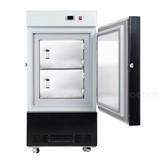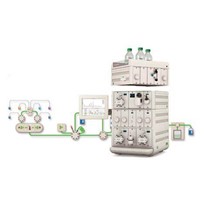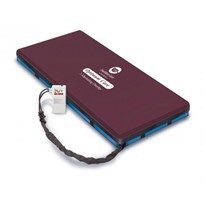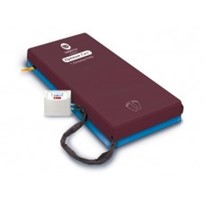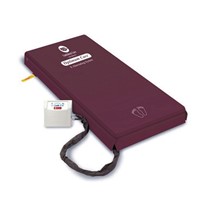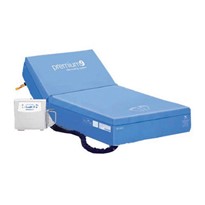The following is a guide to cleaning and disinfection of your ultrasound system with some general tips on proper maintenance and storage for optimum longevity. We also recommend getting your ultrasound machine +/- transducers serviced regularly (ie once a year).
Cleaning and Disinfecting are not the same thing. We recommend cleaning of ultrasound systems including the trolley/stand and transducers regularly prior to disinfection. Ideally, both should be performed after each use but if performing multiple ultrasound examinations daily then a good clean at least once daily and disinfection of the transducer and cable in between each patient examination is the minimum recommendation.
Cleaning:
Cleaning is the decontamination of a surface to manually reduce the load of dirt, debris and biological material. It is essential prior to high-level disinfection or sterilisation in order to maximise the efficacy of the disinfection and sterilisation process.
Recommended cleaners for external surfaces:
Mild soap solution.
Recommended cleaners for screens/monitors:
Purified water or Cleaners designed for LCDs (avoid spraying directly onto monitors, instead apply to soft cloth approved for use on LCDs).
Recommended cleaning for transducers and cables:
Clean the transducer and cable prior to disinfecting to remove any particulate matter and bodily fluids.
Disconnect the transducer from the ultrasound system.
Remove any transducer sheath and any ultrasound coupling gel.
Clean surface using a soft cloth dampened in a mild soap or detergent solution.
Rinse with water or wipe with water dampened cloth; then wipe with dry cloth.
Disinfection and Sterilisation:
Disinfection is a process that eliminates many or all pathogenic microorganisms, except bacterial spores on inanimate objects.1,2 Unfortunately, there is no universally compatible disinfectant for all brands of ultrasound systems and transducers. Different products have been tested and found to be compatible with different transducers by different manufacturers. We always recommend checking with the manufacturers’ guidelines.
Low-Level Disinfection: Destruction of most bacteria, some viruses, and some fungi. Low-level disinfection will not necessarily inactivate some Mycobacterium or bacterial spores.
High-Level Disinfection (HLD): Destruction/removal of all microorganisms except bacterial spores. This may include but is not limited to liquid high-level instrument grade chemical disinfectant, automated chemical or light-based disinfection systems or high-level instrument grade disinfection wipes.
Sterilisation describes a process that destroys or eliminates all forms of microbial life and is carried out in healthcare facilities by physical or chemical methods.1,2 True sterilisation requires soaking of the transducer for many hours in an approved sterilisation solution such as Minncare® Cold Sterilant or Cidex Activated glutaraldehyde solution. In the Veterinary industry this may not always be applicable nor practical, however for procedures where sterility is deemed necessary, we recommend following manufacturer’s recommendations and/or use of a sterile transducer sheath/sleeve/cover.
After cleaning the transducer and cable as above:
Wear PPE if indicated with some agents (ie gloves and/or face mask).
Wear sterile gloves if true sterility is desired.
Disinfect surface using an approved agent (spray, soaking solution or wipes) at the recommended concentration.
Allow appropriate contact time as per manufacturers recommendation.
Rinse with water to remove the disinfection agent residues if applicable and then wipe dry using a single use low linting cloth.
Transducers used on critical aseptic fields disinfected with agents other than alcohol should be rinsed with sterile water and wiped dry with a sterile single use low linting cloth prior to insertion into a sterile sheath/sleeve or transducer cover.
Chemical disinfectants:
Unfortunately to our knowledge there is no single disinfectant compatible with ALL ultrasound systems and transducers. This means that although many products will disinfect and are unlikely to damage your equipment, if they haven’t been tested by the manufacturer then you may not be covered under warranty if not using an approved product.
Most manufacturers will provide a guide on cleaning agents compatible with the exterior surfaces of the ultrasound system and trolleys and a separate guide with disinfectants compatible with transducers.
Sprays will require a recommended contact time and then effective rinsing to remove chemical residues.
Wipes may also require a recommended contact time prior to being wiped dry.
Solutions designed for sterilisation will require long periods of soaking and may be hazardous to the health of your staff so you will need to follow the specific instructions provided.
We always recommend checking with the manufacturers’ specifications for suggested products however the following may be useful:
PI-Spray II (formerly known as T-Spray II): This was the most widely compatible product across all systems and some clinics may still have it in their possession. Unfortunately, this product is no longer available so if you have some, use it sparingly but appropriately.
Matrix Wipes or Matrix Biofilm Cleaning Solution: These products contain patented biofilm surfactants that remove biological soils and biofilms. They are commonly used on a range of medical equipment such as endoscopes and instruments.
These exact products have not specifically been recommended by Mindray or Sonosite for use on their systems however many of their transducers have been approved for cleaning with a similar enzymatic cleaner. Matrix products are available here in Australia.
Cavi Wipes: CaviWipes towelettes contain a combination of alcohols. They are compatible with most Mindray and Sonosite systems. They are available through various suppliers in Australia.
Cidex OPA: Cidex OPA is an activated glutaraldehyde solution compatible with most Mindray and Sonosite systems. It is available in Australia. Be aware that glutaraldehyde exposure can be detrimental to your health so always follow recommended guidelines regarding concentration, PPE and time of exposure.
SONO Ultrasound wipes: SONO Ultrasound wipes contain a mixture of chloride and quaternary ammonium compounds known as BACs (similar to F10). They are compatible with NEARLY ALL Mindray and Sonosite systems and transducers. Currently they are TGA registered overseas including New Zealand but not Australia. You may be able to purchase from the NZ distributor. Also see notes on F10 (below).
Tristel wipes/spray: Tristel is a chlorine dioxide based disinfectant available in Australia.
Trigene Advance Wipes: Trigene advance wipes contain a combination of <1% chloride compounds. They are compatible with many of the Sonosite systems. You may be able to source them from the same suppliers of Trigene II liquid disinfectant.
Isopropyl Alcohol: Several recommended disinfectants contain isopropyl alcohol ranging in concentrations from 20-70%. Isopropyl alcohol (no greater than 70%) is a Low Level Disinfectant that can be used on the connector housing, the transducer housing and the lens (acoustic window) however unless recommended by the manufacturer, avoid using on the cable as it may cause degeneration of the cable cover.
Although alcohol is commonly used to moisten the skin of patients after clipping and/or as a coupling agent especially in emergency settings, it is not recommended as a coupling agent. If used it should be no more than the concentration specified by the manufacturer of your system and should be wiped off the transducer when finished to prevent damage to the transducer lens. Also consider for optimum quality images that a relaxed patient is more cooperative than an anxious one and alcohol on freshly clipped skin may sting and aggravate clipper rash. See also tips below regarding coupling agents.
Hydrogen Peroxide: Some manufacturers advocate the use of activated hydrogen peroxide for low level disinfection such as Oxivir Tb. The active ingredient in Oxivir Tb is 0.5% hydrogen peroxide and is compatible with many Mindray and Sonosite systems. Some compatible products contain up to 3% hydrogen peroxide but again check compatibility with the manufacturer for your specific transducer.
Protex wipes/spray: Protex disinfectant wipes and/or spray contain quaternary ammonium compounds and are compatible with most Mindray and Sonosite systems however they do not appear to be available in Australia at present.
F10: The active ingredients in F10 are a combination of Benzalkonium Chloride (BACs) and polyhexamethylene biguanide.3 The combination of these ingredients is claimed by the manufacturer to minimise resistance by microorganisms.
According to the Australian distributor of F10, Chemical Essentials, the manufacturer claims it will not damage equipment and recommends varying dilution rates for Low level, High Level and Parvoviral disinfection. For efficacy against Covid -19 (SARS-Cov2) the manufacturer recommends a 1:100 (10ml/L) dilution rate with contact time of 5mins prior to rinsing off.4
Please note that this product is not mentioned by either Mindray or Sonosite for disinfection of their systems/transducers.
BACs are the active ingredient in SONO Ultrasound wipes which have been recommended for use on many Mindray/Sonosite systems and transducers however it should be noted that they do not contain the other active ingredient in F10.
For specific compatibility of disinfection agents with your system we recommend checking manufacturers’ recommendations.
General tips for optimum maintenance of your system:
The use a silicone cover over the Operator Panel can minimise build up of dust/debris and protect against the bulk of biological material (Don’t forget to clean this too!).
Consider single use protective sleeves for the transducer probe and cable.
Remove coupling gel and clean and disinfect the transducer in between every patient and before storing.
Avoid using paraffin or similar oil-based lubricants on the transducer probe and cable as this can lead to damage to the PZ crystals and premature degradation of the outer sheath. Due to the conductivity of oil, it can also cause increased heat generation at the acoustic window which may be uncomfortable for the patient.5
Although alcohol and mineral oils are commonly used as coupling agents we recommend the use of good quality coupling gel +/- water. Alcohol can damage the transducer lens and should be used at concentrations recommended by the manufacture for cleaning/disinfection only. Water can be used to remove air trapped on the skin after clipping and to wipe away cellular debris without stinging or irritating clipper rash. In a study published by Cassarotto RA et al (2004), “water and gel presented the highest transmission coefficient, the lowest reflection, and an attenuation coefficient and acoustic impedance close to that of the skin” and mineral oil and petrolatum resulted in increased heat generation at the transducer lens.5
If your machine is not stored back in its box it is a good idea to place a cover over it, preferably one that breathes to avoid condensation accumulating in the electrical ports as the machine cools down after use.
Avoid storing your machine and transducers too close to areas of high moisture or strong air movement (ie Laundries with clothes driers, external doors, Central Sterile Supply where sinks/autoclaves are in use, etc) or in areas of extreme changes in ambient temperature (ie vehicles overnight).
Getting your system (machine and transducers) serviced regularly is also recommended for optimum performance. We can service your equipment for you here at BCF Ultrasound and we also offer customised service packages with our ultrasound systems. Please call our office for details or download a service request form.
References:
William A. Rutala, Ph.D., M.P.H.1,2, David J. Weber, M.D., M.P.H.1,2, and the Healthcare Infection Control Practices Advisory Committee (HICPAC)3, 2008 “Guideline for Disinfection and Sterilization in Healthcare Facilities”, Update: May 2019, Viewed 15 April 2020, https://www.cdc.gov/infectioncontrol/guidelines/disinfection/
Shenzhen Mindray Bio-medical Electronics Co., Ltd. All Rights Reserved © 2019 Ultrasound system Cleaning, Disinfection & Sterilization Guide [Advanced], Viewed 14 April 2020, https://res.mindray.com/AntisepticDocuments/2020-02-13/8c978920-3356-4729-b642-dbecde4ebb44/Ultrasound%20System%20Cleaning,%20Disinfection%20and%20Sterilization%20Guide_CE.pdf
F10SC Veterinary Disinfectant; SDS Revision number. 003 [Online];Health and Hygiene (Pty) Ltd, Florida Hills, South Africa, June 2017, https://www.zebravet.com.au/download/PZ159-F10200.pdf (accessed April 15, 2020).
Chemical Essentials, Frequently asked questions, Viewed 16 April 2020, http://www.chemicalessentials.com.au/faq.html
Casarotto, RA, Adamowski JC, Fallopa F, Bacanelli F 2004, ‘Coupling agents in therapeutic ultrasound: acoustic and thermal behaviour’, Arch Phys Med Rehabil. Vol 85, no 2, pp. 162-5, Viewed 20 April 2020, https://www.ncbi.nlm.nih.gov/pubmed/14970985
Weblinks to guidelines published by specific ultrasound system manufacturers:
https://www.mindraynorthamerica.com/wp-content/uploads/2019/03/Mindray_M-transducers_disinfection-guide_40369A.pdf
https://res.mindray.com/AntisepticDocuments/2020-02-13/8c978920-3356-4729-b642-dbecde4ebb44/Ultrasound%20System%20Cleaning,%20Disinfection%20and%20Sterilization%20Guide_CE.pdf
https://www.sonosite.com/sites/default/files/Disinfectants_ENG_P22043-01B_e.pdf
https://www.sonosite.com/au/support/cleaners-disinfectants (this is an interactive tool)
Guidelines pertaining to Australasian medical ultrasound cleaning and disinfection practices:
https://onlinelibrary.wiley.com/doi/full/10.1002/ajum.12042
https://www1.health.gov.au/internet/main/publishing.nsf/Content/advisory-statement-A18-06
https://www.ncbi.nlm.nih.gov/pmc/articles/PMC6581159/pdf/AEM.00377-19.pdf














-160x160-state_article-rel-cat.png)



